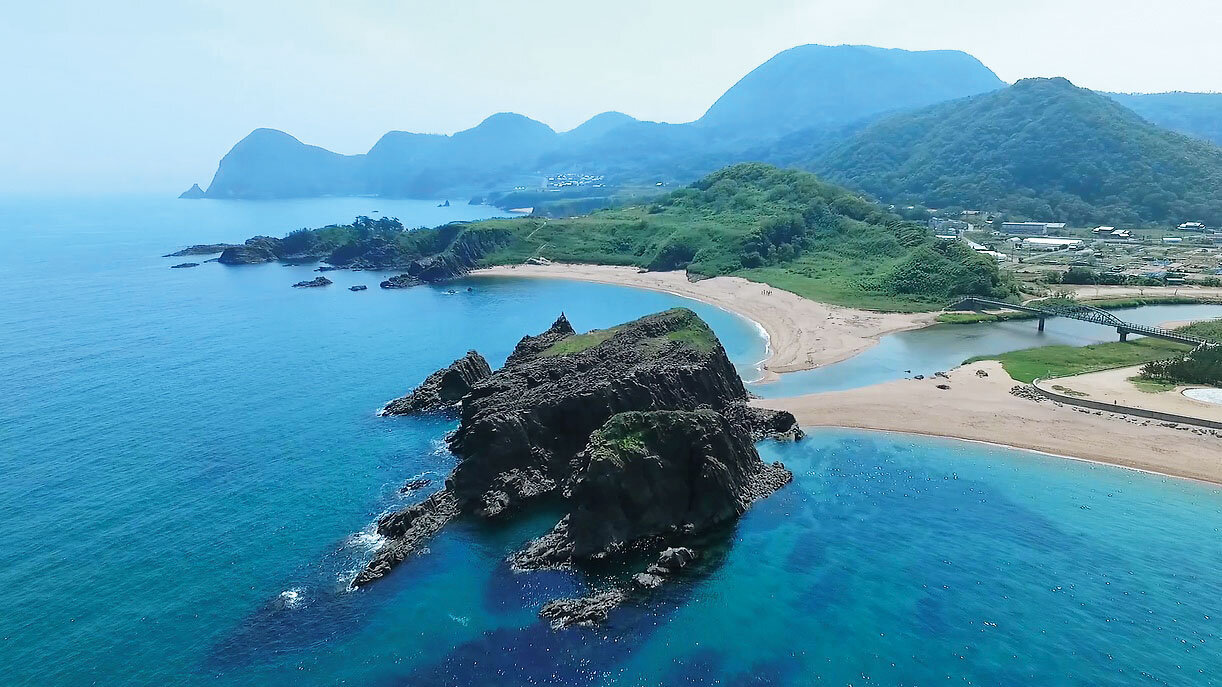5,000 years, Taste the Journey
DMO column 3.15.2021
Kyoto by the Sea is a place where rural life merges with that of travelers. Farmers tend to cliff-side rice terraces and welcome visitors to take part in planting and harvesting. Set to the backdrop of some of Japan’ s most scenic locations, the local fishermen invite you along while they navigate the coastline to their favorite fishing spots. We want visitors to share in special moments that quiet even us, those who live here; the translucence and grace of a gliding squid, the brief, magnificent burst of flying fish into sparkling sky, golden rice stalks swaying as one. This is our livelihood, but nature and what we receive from it remains an inspiration to everyone. Our ancestors settled here in northern Kyoto more than 5,000 years ago, and we can see from the beautifully designed earthenware and artifacts that have been discovered how rich the spirits and lives of our ancestors were. We continue the traditions of those who came before us, creating slowly and by hand, cooking in harmony with the environment, and living thankfully. Living, eating, traveling...we see no boundaries. In Kyoto by the Sea, the concept of terroir goes hand in hand with the people who have become a part of the land, and those who come to share it.
what the heart tastes
Artisans in Kyoto by the Sea offer harmony in their cooking. Our master chefs want to revive the joy of tasting the seasons. They understand that fresh, local ingredients are precious during an age of artificial flavors. The results of their labor are dishes that celebrate the splendor of nature and create a sense of place. The often-clichéd, true Japan, is a revelation found through 100% local cuisine.
Small towns, Big flavors
Blessed with naturally fertile volcanic soil, the crystal clear waters of the Japanese Sea, and mountain rivers delivering fresh spring run-off to the villages and Sea of Japan, Kyoto by the Sea has an incredible wealth of local ingredients, so many in fact that creating a multi-course dinner with all local ingredients is something chefs here can be proud of. Clean mountain streams flow into a sea that resides on a Global Geopark coastline where Matsuba and Taiza crab, oysters, shellfish, yellowtail, varieties of squid, sea bream, flying fish, deep sea smelt, and more can all be found. The variety of agricultural produce matches the variety found in the sea, from sand melons to pears, to grapes, figs, strawberries, blueberries, and all manner of vegetables; every season offers its own distinct cuisine. The koshihikari rice here has received the “special A” ranking multiple times, its high-quality is, in part, thanks to the excellent water in the region.
Implicit within water...
There are villages in Kyoto by the Sea where the mountain springs briefly sojourn before continuing the journey into the Japanese Sea. These areas are places of natural complexity, where mountains, rivers, the sea, rain, snow, and clear sky between rainbows all converge. The water, which not only flows from the mountains to the sea, also falls from the sky, blankets the land as snow, and graces the residents as mist. It is the reason for the rice, produce, fish, and people. These blessings of water resonate and nourish us.
We celebrate life when we celebrate food.
Trees dip their roots into the underground springs of the mountains and fan themselves with fresh, clean air. Pears, persimmons and chestnuts dot their branches with color. The shallows of the coast harbor abalone and sea urchins, and farther out yellowtail and squid ride the warm, offshore currents. And below, crabs and shrimp are cradled by the deep sea’ s subtle motion and cold temperature. Considering all these elements together is overwhelming, the scope of which feels like a miracle. Our ancestors have been settled here for over 5,000 years, and within each morsel resides our heritage. We are humbled by the knowledge that the food that nourished them is the reason we are here today.
The birthplace of Japanese Sake
Japanese sake brewing began in the Kyoto by the Sea region. Moto Ise Kono Shrine has records dating back 600 years, where it’ s written that Japanese sake began here and was passed on to Ise Shrine. In Japan, sake is something dedicated to the gods and in offering it, we show gratitude. Kyoto by the Sea contains fifty percent of all the shrines in Kyoto prefecture. And since traditionally, shrines were located in places with high-quality water sources, a necessity for high-quality sake as well, it is easy to see the link between sake and shrines, between nature and the heavenly.
5,000 Years, Taste the Journey English Brochure








